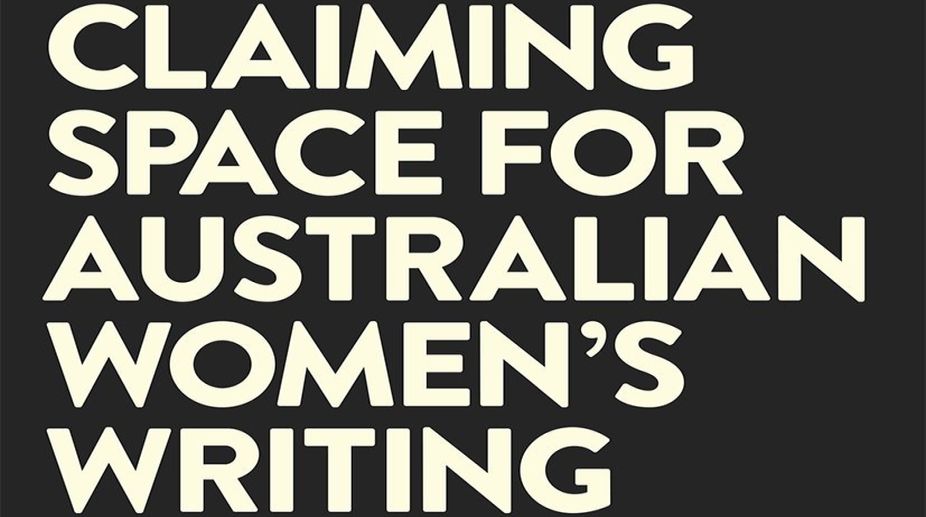Empowering women through literature
Empowerment is a cornerstone for enabling women to realise their full potential, make informed decisions and actively participate in all aspects of society.

(Photo: Twitter)
Exclusion from the cultural and literary mainstream is an experience that women writers everywhere have had to contend with for millennia. It has been a common struggle for women writers and feminist scholars globally to claim intellectual space within the predominantly patriarchal literary canon. Kept outside the “male stream”, and relegated to the margins of Australian national culture, the Australian women writers too have faced neglect.
Claiming Space for Australian Women’s Writing, edited by eminent South Asian scholars Devaleena Das and Sanjukta Dasgupta, attempts to redress this gendered marginalisation of Australian women writers and assert their centrality in Australian culture and literature. This edited volume presents 18 well researched scholarly articles by renowned academics and researchers, grouped thematically into four sections.
Advertisement
Enriched with an introduction that locates the contemporary Australian women writers in their historical and critical context, this volume showcases the varied and vibrant corpus of Australian women’s writing, not damning them with indifference or “faint-praise”, but by charting a vigorous, mature and inclusive tradition of women writers — white, aboriginal, immigrant, coloured, queer, canonical or forgotten; and celebrating more than a hundred years of Australian women’s writing.
Advertisement
Covering a wide trajectory of representative women writers from the late 19th century to the present times and scrutinising a vast array of genres-letters, diaries, poetry, mothers’ laments, nurse narratives, novels, romance, druginduced accounts, aboriginal writing, protest poetry, feminist, queer and immigrant writings, this volume builds awareness about the central issues of Australian women’s literature — their search for identity, equality, creative freedom and literary space, self-discovery, conflict and meaning as well as their gendered reading of Australian life and society.
The essays in this collection are particularly commendable for their new and innovative perspectives. Dealing with writers as diverse as Alice Muskett, Katherine Susannah Prichard, Kate Grenville, Judith Wright, Romaine Morton, Jackie Huggins, to name a few, the essays not only emphasise the heterogeneity of these Australian women writers but also their interconnectedness.
Devaleena Das’s essay in the first section builds on this inter-connectedness in the complex relationship between Louisa Lawson and Mary Gilmore. The linkages between the women writers — locally or globally — further come out in Susan Sheridan’s essay.
Ffion Murphy and Richard Nile reclaim a space for lamenting mothers from their repressive narrative silence, while Victoria Reeve deals with the complexities of the white woman’s gaze. In the second section, Sanjukta Dasgupta, in her overview of five Marxist-feminist writers from Miles Franklin to Germaine Greer, shows how these writers used the pen as activism to interrogate patriarchal norms and raised their voices on issues like gender equality or socio-political and economic status of women. Dasgupta’s discourse on inter-sectionality of gender with class, education, location or sexuality is carried on by Raymond Evans, Belinda Burns, Jessica White and Sue Kossew in their enlightening essays.
The third section dealing with the representation of the female body and sexual orientations, claims space for alternative sexualities. Susan Hawthorne’s essay on lesbian writers like Kerryn Higgs, and Damien Barlow’s explorations of nonnormative sexualities in Barbara Hanharan too are richly informative.
Nycole Prowse’s analysis of hippy counter-culture and the influence of narcotics — “soft-drug” addiction and substance abuse in Helen Garner’s urban novel — also deserve special mention. In part four, Anne Brewster delves deep into protest poetry by aboriginal women and Sibendu Chakraborty adds to her argument by spotlighting how the aboriginal feminist views negate both patriarchal strictures and Eurocentric feminism.
Ishmeet Kaur on the other hand traces how orality becomes a subversive strategy against normative literacy, empowering the aboriginal women. The immigrant women’s experience in Australia is brought out in Sanghamitra Dalal’s focus on the Anglo-Indian-Australian writer Patricia Pengilley, Ipsita Sengupta’s article on the little known Mary Louisa Skinner, and finally Sharon Rundle’s essay on the Sri Lankan-Australian woman of colour Chandani Lokugé.
The comprehensive manner in which the essays address the identity politics, politics of location and systematic marginalisation, spatiotemporal dynamics or the politics of the body and/or sexuality as represented in the literary writings of the Australian women, makes the volume a veritable archive of scholarly material for future research, an indispensable critical resource on Australian women writers and their works. The transnational dimension brought to bear on the Australian women writers by the Indian scholars opens up space for further dialogue and new, dynamic linkages.
This collection of insightful essays thus not only claims space for Australian women’s writing, as it ostensibly professes, but in doing so, it also lays claim to a transnational space for women writers everywhere — beyond the narrow and delimiting boundaries of nation, ethnicity, race, religion, location, colour, gender or sexuality.
It expands the purview of analytical, cutting-edge research on women’s writing, fosters academic discussion and gives rise to a new direction in scholarly engagement; thereby elucidating a rich critical tradition of comparative research — open, inclusive, innovative and empowering — integrating different cultures, languages and worldviews; and a new transnational “sisterhood” as it were — fluid, multivalent and borderless —for women writers and researchers across the globe.
(The reviewer is assistant professor, department of English, Dr Kanailal Bhattacharya College, Howrah, and guest lecturer, Calcutta University)
Advertisement